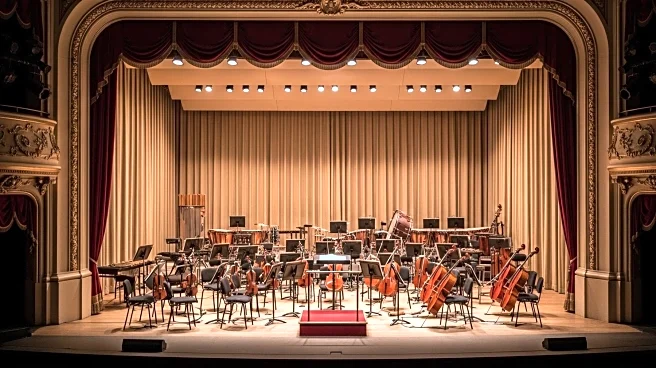What's Happening?
The Glorya Kaufman Foundation has opened a new wellness center in Culver City, Los Angeles, following the passing of its founder, Glorya Kaufman, at age 95. The center, named the Glorya Kaufman Community Center, was inaugurated on September 6 and represents a $17 million investment, with $6 million dedicated to programming. The center offers free wellness activities such as yoga, meditation, and dance classes, and includes a 150-seat theater and psychotherapy services. Kaufman, known for her philanthropic focus on arts and healthcare, has left a legacy of significant contributions to dance schools, art museums, and healthcare facilities in Los Angeles.
Why It's Important?
The opening of the Glorya Kaufman Community Center is significant as it addresses the growing need for accessible wellness services amidst federal cutbacks to arts and public health funding. By providing free programming, the center aims to enhance community well-being and offer stress relief through cultural and health-related activities. This initiative reflects Kaufman's philanthropic vision of improving lives through arts and healthcare, and highlights the importance of private funding in sustaining community services during times of governmental budget constraints.
What's Next?
The center is expected to host a variety of free events and workshops, including those coordinated by the Wende Museum, which is located nearby. It will also facilitate nonprofit convenings and award the Nonprofit Transformation Prize to local organizations serving vulnerable populations. The center's offerings are set to expand, with plans to include a menu of free food and additional wellness activities. The initiative may inspire other philanthropic efforts to support community wellness and arts programming in Los Angeles and beyond.
Beyond the Headlines
The establishment of the Glorya Kaufman Community Center underscores the potential for museums and cultural institutions to serve as hubs for community wellness. By integrating arts and health services, the center challenges traditional boundaries and promotes holistic approaches to public well-being. This model could influence future philanthropic strategies and encourage collaborations between arts organizations and healthcare providers.










